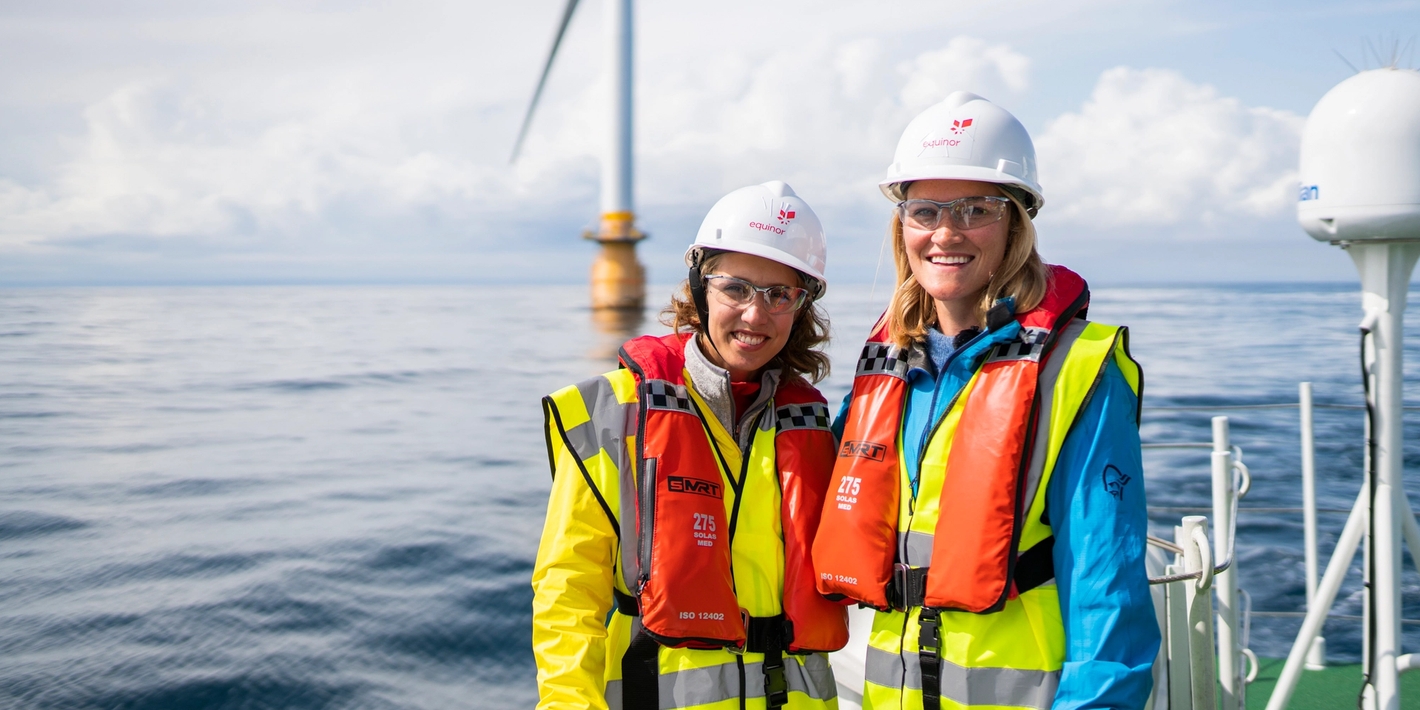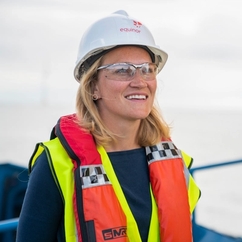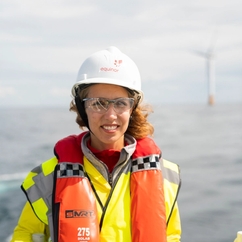— and how offshore expertise from Norway is making it possible
In the future, the world will depend on climate-friendly generation of electricity — and it’s offshore industry expertise from Norway that’s making the transition possible.
“I was involved in the work building these in Spain,” says Selås proudly. “It’s really cool to see them in real life.”
16 years after the Hywind design was first sketched out on a napkin by a couple of Norwegian Equinor engineers becalmed on a sailing trip together, the Hywind Scotland wind farm could start supplying the Scottish town of Peterhead with electricity in 2017.
Even though it’s a relatively calm day out at sea off Aberdeen, the large offshore wind supply vessel is rolling rhythmically in the swell. High above the deck, one of the five floating wind turbines rotates with a gigantic circumference of 154 metres, driven by the wind. This wind farm is the first of its kind in the world, and the start of what could be Norway's next industrial adventure — and an important contribution to reducing greenhouse gas emissions.
Stine Myhre Selås started working for Equinor in 2010, after coming straight from her studies with a master’s degree in marine engineering. She admits there are still many challenges to be solved, but believes wind power today can be compared to the pioneering early years in Norway’s oil industry in the 1970s.
“Initially there weren’t many oil engineers in Norway, but experts from the geoscientific, shipping, mechanical and construction industries were used and built on their expertise. It's a little bit like we're working on developing new renewable projects today, she says.
Wind energy is climate-friendly
New advances in renewable energy are constantly being made. One of the areas that Equinor is focusing on is offshore wind. And a lot of this expertise comes from oil and gas, because these are also big projects out at sea.
“This is just the beginning. We will be able to build even better turbines and even larger wind farms in the future,” says Myhre Selås.
Went from oil to wind
Astrid Fosså Ekseth worked with oil in Equinor for nearly five years. Then she started heading up the department working on the preparation for operation of offshore wind projects.
“For me, the transition to renewable energy went surprisingly well. In oil and gas projects I have learned about marine operations and project implementation, which is the competence you need in wind projects as well.”
She says the plan now is to scale up and build larger wind farms, some floating like Hywind Scotland and some that are bottom-fixed, such as the Empire Wind wind farm outside New York, which is scheduled to deliver first power in the mid-2020s.
“New York is among the cities in the world with the most ambitious climate targets, and wind is an important part of the solution. For Equinor, this is a big project, and I'm sure our experience from oil and gas projects will come in handy again,” says Fosså Ekseth.





